At this time of year, Prickly Lettuce (Lactuca serriola) takes over roadsides and some gardens around Gawler and probably the gardens of many @hivegarden and @homesteading folks who live in Oz. It loves the fullest of Sun but is OK with a little shade – not too much though or it won't grow tall and flower on time. This is the best time to harvest it for remedies as the flower buds are forming but most of the plants haven’t flowered yet. I’ve found that this is when the plants are bitterest and the pain relieving properties greatest.

I dry a stack of Prickly Lettuce for use later (it makes a great percolation - more of that another day) and usually tincture some of the fresh Prickly Lettuce in 40 – 50% alcohol as the compounds that we are after are water soluble but as I still have several bottles of tincture left from last year, I decided not to tincture any but to play around with some decoctions of it and see how strong, black and icky I could get it.
Here’s how to do it –
Harvest your Prickly Lettuce and cut from the top, working your way down so that the latex keeps pumping up. Cut the leaves and stem, as the latex that we are after is spread throughout the plant. Some herbals talk about just cutting into the stem, but that is for folks who have Lactuca virosa, which is the northern hemisphere species in which the sap is concentrated more in the stem. Ours will leak a little sap from a small cut but not the glorious amounts of ooze you’ll get from L. virosa. In fact, one of the old ways of collecting the latex was to make a cut in the stem and get some of the milk on your fingers. Then that was rolled into a ball and the process repasted until the little ball that has formed reached a good pill size. Many pills were made this way and stored for later.
Prickly Lettuce tends to dry its leaves from the bottom up (i.e. oldest first) so when harvesting it, you won’t get much goodness below the level where the leaves turn brown and shrivel. If you’re cutting down from the top as I suggested, there will be little or no latex coming out of the stem by the time you get to this level, so stop there and start harvesting a new stem or plant.
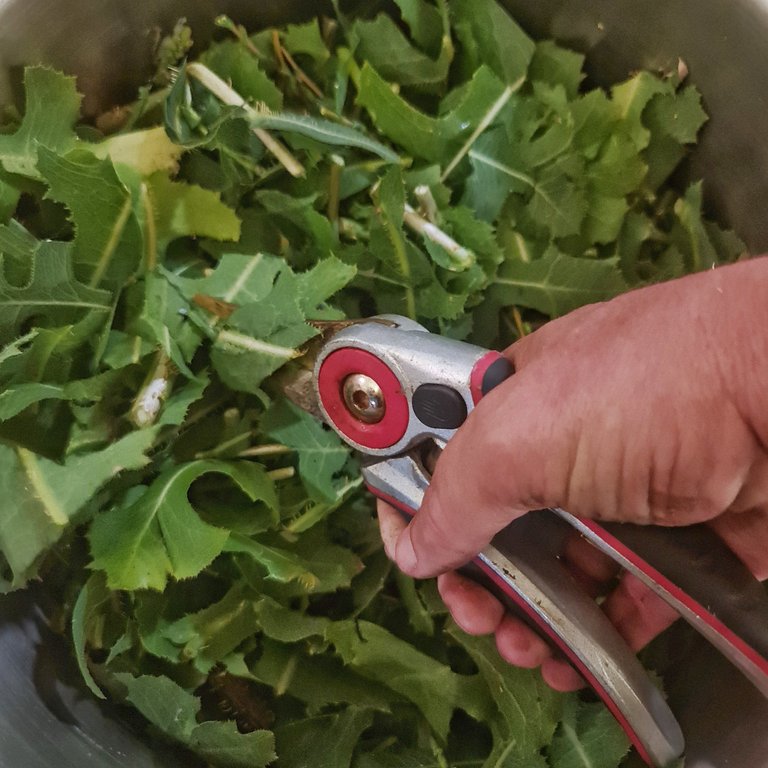
Decocting

Chop your plant material as finely as you want. As long as most pieces or leaves have a few cuts in them, the goodies will be easily extracted. Put it all into a big pot, cover with twice the volume of water and bring this all to a boil. Let it boil for 5 minutes or so to really get the heat and water in there, then simmer until the water level is reduced to about 25%.

At this stage, let it cool until you can handle the plant material then strain out the water and press the marc. You can filter it all now or leave it until after the next stage.
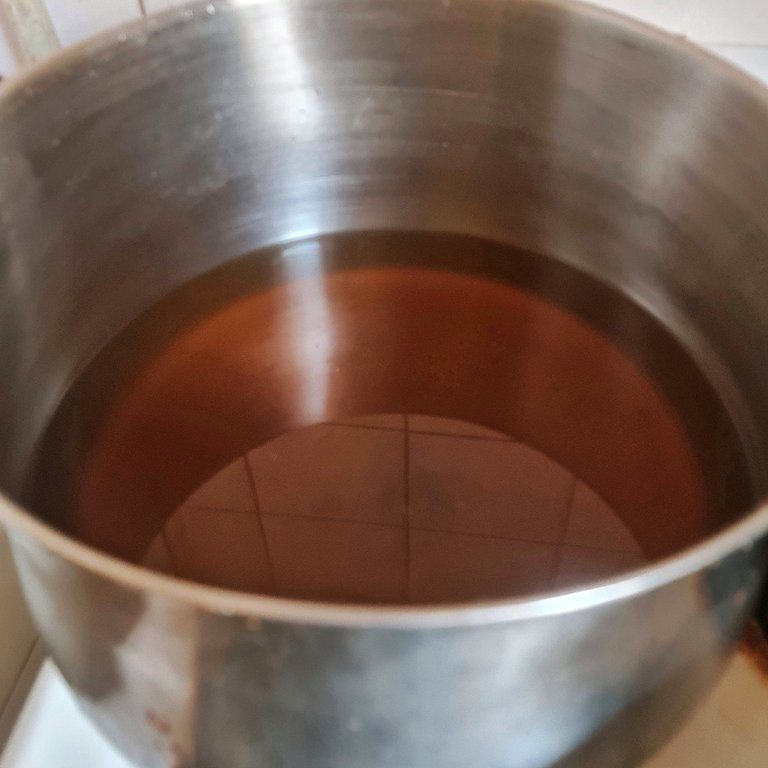
Simmer the remainder down as much as you dare. It will turn blacker, get thicker and become more bitter as you go. Some folks reduce it to a thick, almost tar – like consistency but I always end up burning it at this stage. I’m not sure if burning it makes any difference but it does change the taste. I like to keep it all fairly liquid, it makes it easier to combine with other remedies later. About 2 kg of Prickly Lettuce and 4 litres of water will reduce to 100 ml or less.
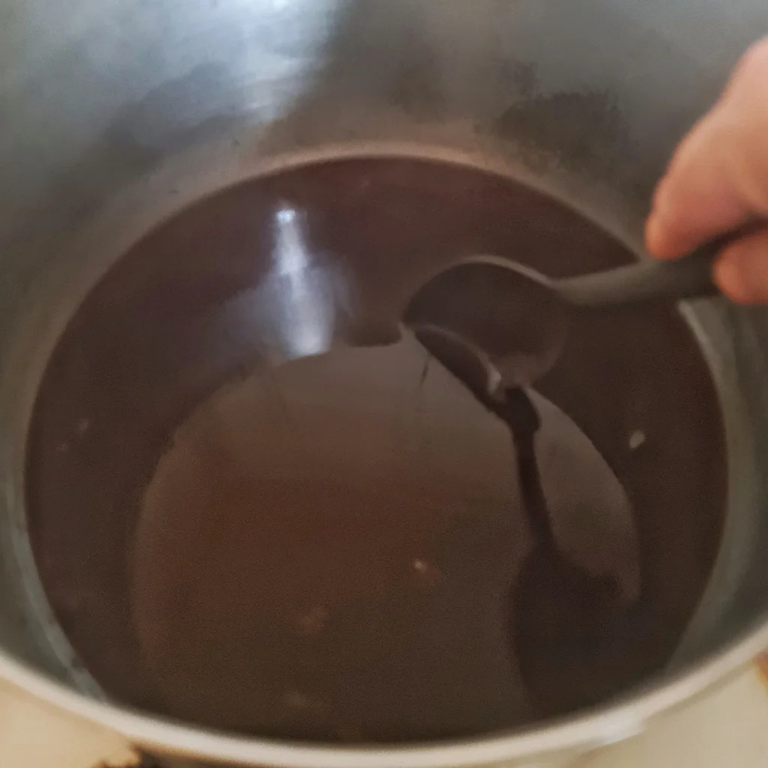
If you didn’t filter the decoction earlier, do so now.
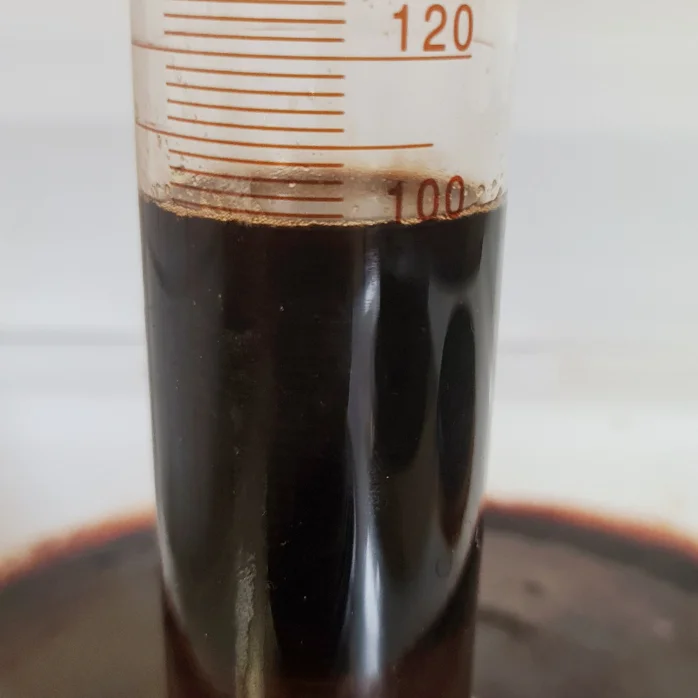
Adding alcohol to preserve the decoction
You can store the decoction in the fridge or, if you don’t have a fridge, add alcohol to preserve the liquid. You need to make the total alcohol concentration in your liquid above 20% or above for effective storage. Use any of the calculations on our ‘A little about alcohol‘ page to work out how much you will need to add. In the example in the pics, I have 100ml of extract, which has 0% alcohol. To make the extract 20% alcohol, I add 27ml of alcohol that is 95%. That brings us a tad over 20% and is perfect for our requirements.
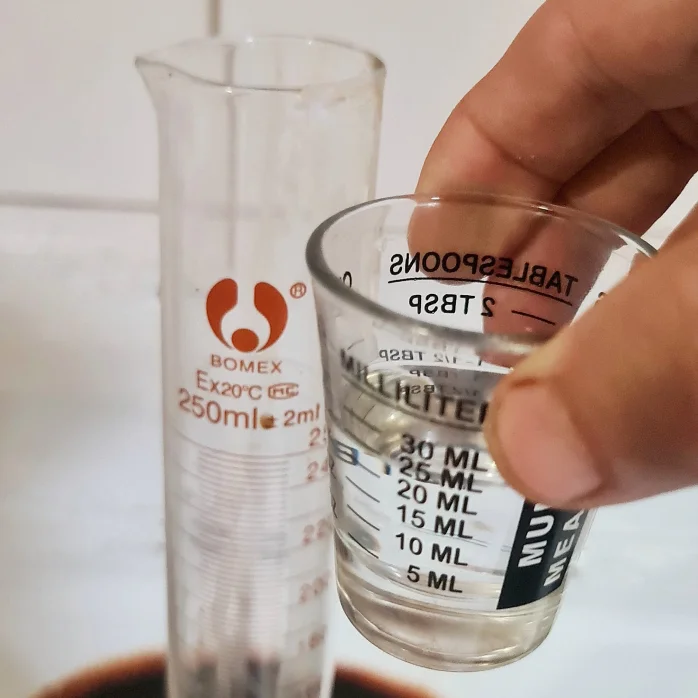
.
 )
)Adding that proportion of higher of alcohol will precipitate some ‘goo ‘that is the albuminous and resinous components of the extracts but that’s OK. You can filter this out, let it settle or just shake up your bottle before dispensing the extract or mixing it with other remedies. Check out this post – ‘What’s this goo in my tincture?‘ to get more details on the topic.
Some of you may have seen that I've been writing a series of posts about making herbal remedies at home. I want to share what I know of this topic so that, as the world gets crazier, folks will have other avenues of medical care, namely those of themselves and their community. If you look back over this blog, you can see heaps of info on the topic, plus loads and loads of posts on herbs and using Australian bushfoods from a white perspective. If you haven't been around on in the @hivegarden and @naturalmedicine communities for long, you may be interested in looking back. There's w-a-a-a-a-y too much there for me to repost and the Hive system doesn't let you vote on old posts so, if you're happy with what you find, I believe that there is now a tip option...






